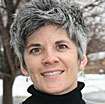Once you have a sermon draft, you can begin to tweak various elements.
It is important that a sermon is not edited to mirror a term paper. Maintain the oral, lively, interactive nature of what you have written. This is not to say that you should refrain from making adjustments. The following suggestions will help you edit for the ear.
1. Remember that you can speak faster than we can listen. While you have been sitting with the text and the sermon all week, your hearers are likely thinking about the text and hearing your sermon for the first time. Hearers are not like readers. Because hearers cannot go back and listen again to something they did not catch the first time, it helps for preachers to predict when hearers will need more time.
Write pauses into the manuscript and stick to them. Pauses are helpful, for example, at transitional points and after you have invited us to imagine something. Even more, if you ask a question and you really want us to think about it, give us time to think about it.
2. Vary your style of discourse. Utilizing a combination of storytelling, historical details, first-order proclamation, teaching, etc., can help avoid information overload and draw us into your sermon.
3. Shorten your sentences. If, when you are “practicing” your sermon aloud, you run into a sentence that is clunky or requires awkward breaths to make it to the end of the sentence (like this one), it is a sure sign that the sentence needs rearranging. It may even need pruning.
Gustav Flaubert once suggested, “Whenever you can shorten a sentence, do. And one always can. The best sentence? The shortest.” This is certainly not to suggest that all sentences should mirror a “See Jane run” structure. Rather, a variety of sentence lengths is most engaging for hearers.
4. Give us verbal cues. While this can be done with variety in vocal tone and gesture, content can be adjusted to alert us to take a particular listening stance. For example, by saying, “once upon a time,” we know that a story is coming. We assume also that the story will be fictitious. Rhetorical phrases such as, “Listen carefully,” or “It’s very important to remember…,” or, “Brothers and sisters in Christ,” pique our attention. Use such phrases sparingly since saying, “It’s very important to remember…,” too many times will render the words meaningless.
5. Map your sermon. Although this is something similar to an outline, outlining seems too static and “term paper-like”. Mapping, on the other hand, implies action and motion. This is much more enticing to the hearer. A map of a sermon shows movement from one section to the next, bridges the transitions, displays points of interest, describes elevation (in vocal tone or intensity or mood, for example), and warns against potential road blocks.
The hoped-for outcome is that hearers will not be distracted by gaps and non sequiturs, but feel invited on a journey as a result of coherence of thought and seamless transitions. Mapping the sermon provides a bigger view which is necessary to guide you in amending words, sentence structure, paragraphs and transitions.

